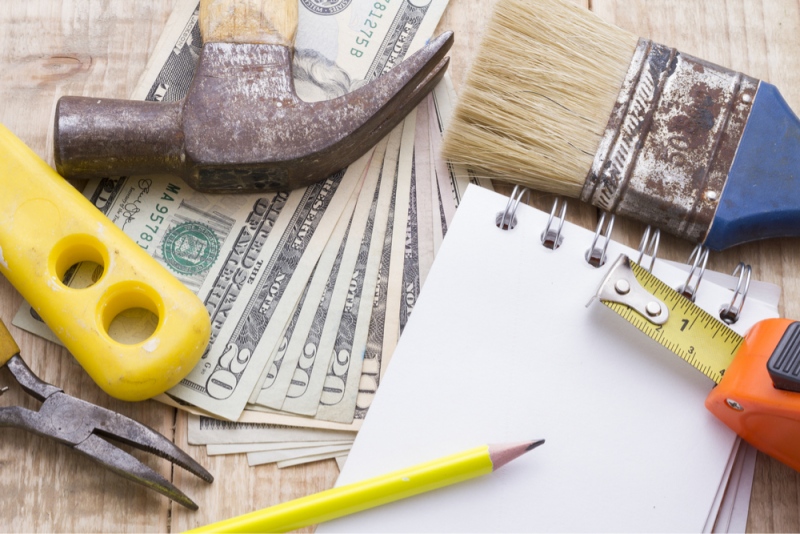When It Is Urgent, And You Can’t Save For It
If you have a leaking roof, a sewer, water, or electrical issue, it may not be possible for you to wait and fix it once you have saved up for it. Delaying these repairs can result in additional damage to your home, which can end up costing you more in the long run.
For instance, if you have an issue with your roof, you may have no idea how to finance a new roof, but you can explore several options, from a home equity loan to a personal roof loan or one that is federally subsidized or even a grant, under FHA 203(k).
In some cases, if you are in a hurry to do repairs, a personal loan may be the best option. Home equity lines and other loans take more time to process. Provided you have a decent credit score, are not overly in debt, and you have a dependable income, you can get a decent loan with a reasonable interest rate.
When the Amount Is Just Too Much
If the amount of the home repair you want to do is small enough, and you have the credit, using a 0% APR credit card or other credit card option can be a good solution. However, some projects, like the new roof mentioned above, are just too large for most credit cards.
At that point, you can decide how to finance the project depending on how much it will cost and how soon you need to get it done. Home equity lines take time and involve closing costs and potentially other fees, and you will have to wait 4-6 weeks for a decision.
You can also explore other options like the one mentioned above. Banks often offer personal loans for home improvements that are unsecured and you can get approval faster than other methods. If you’re over 62, you can take into consideration the benefits of a reverse mortgage and use it for the needs of your home.
Some projects might require special financing, like an addition or adding a pool. Some companies offer their own financing options or will work with lenders to find a way you can pay for your project over time.
Paying Your Homeowner’s Insurance Deductible
While some home improvements or repairs will be covered by your homeowner’s insurance, the deductible on your policy may be higher than what you can afford depending on the type of repair you are trying to do.
In some cases, financing the deductible may be the right thing to do in order to facilitate repairs. Of course, like the other situations, the financing you do will depend on how much your deductible is and how quickly you need the money.
Like medical insurance, sometimes the deductible on your policy is inclusive or the amount you have to pay may vary depending on the repair that you need. If you haven’t used any of your deductible all year and you need a new roof, the amount may be too much for you to cover on your own. Financing the difference may be the best option.
Upgrades Before You Sell Your Home
Another reason to finance home improvements may be that you are making some upgrades before you sell your home. In this case, you need to be careful about how you go into that debt. Taking out a second mortgage may not be a good idea, especially if you are going to buy another home right away, and too large of a personal loan may also be a bad idea.
The reason is that both of those things can have an impact on your credit score and your debt-income ratio. The wisest move is to get a loan in advance, (you can find a list of options here: https://aaacreditguide.
If you have a set loan you have already received, you’re forced to stay within that budget. This means you won’t spend more than the value you will get out of the upgrade when you sell your home, so that you can pay off that debt right away.
In this case, a personal loan may be the best answer. Just be careful to avoid using credit card debt to go over budget. You will end up paying for that in the long run.
Most of the time, the best way to pay for home improvements is to save up for them and pay cash. You won’t have to pay interest and other fees in that case. However, sometimes circumstances or the amount of money you need may be too large for that to work. In those cases, you should finance home improvements.
Just remember, there are a number of ways to finance these projects, and each has their pros and cons. Weigh your options, choose carefully, and have a good reason before you borrow.
















